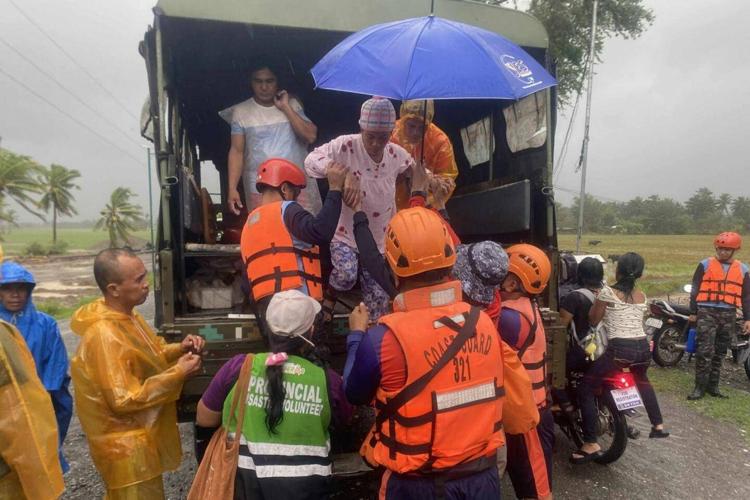
Typhoon Fung-wong has moved away from the northwestern Philippines after causing devastating floods and landslides. The storm resulted in at least eight fatalities and displaced more than 1.4 million individuals. As the typhoon departed, it left a path of destruction, with many regions still reeling from the impacts of Typhoon Kalmaegi, which had devastated central provinces just days earlier.
Fung-wong made landfall in northeastern Aurora province on the evening of March 10, 2024. The storm was classified as a super typhoon with sustained winds reaching up to 185 kilometers per hour (115 mph) and gusts of up to 230 kilometers per hour (143 mph). The extensive reach of the storm spanned approximately 1,800 kilometers (1,100 miles), and it began to lose strength as it moved through the mountainous northern regions and agricultural areas before exiting into the South China Sea.
The typhoon’s aftermath has been severe. Reports indicate that one person drowned in flash floods in Catanduanes, while another individual in Catbalogan city lost her life when her house collapsed. In Nueva Vizcaya, three children perished in separate landslides, and four others sustained injuries, according to local police. An elderly person also died in a mudslide in Barlig, located in the northern Mountain Province. A further landslide in Lubuagan, in nearby Kalinga province, claimed the lives of two villagers, with two more reported missing.
Prior to the storm’s arrival, more than 1.4 million individuals sought refuge in emergency shelters or the homes of relatives. As of March 11, approximately 318,000 people remained in evacuation centers. The storm resulted in flooding across at least 132 northern villages, with some residents stranded on their roofs as waters surged rapidly.
The destruction extended to homes and infrastructure, with about 1,000 houses damaged. Officials from the Office of Civil Defense, including Bernardo Rafaelito Alejandro IV, indicated that many roads blocked by landslides would be cleared as weather conditions improved. Alejandro warned that although the typhoon had passed, the rains still posed risks in certain areas of northern Luzon, including metropolitan Manila. Rescue, relief, and disaster-response operations were scheduled to commence immediately.
In response to the extensive damage from both Fung-wong and the earlier Typhoon Kalmaegi, Philippine President Ferdinand Marcos Jr. declared a state of emergency. The urgency of these storms underscores the Philippines’ vulnerability, as the country frequently experiences typhoons, earthquakes, and volcanic eruptions.
Despite the widespread destruction, the Philippines has not issued a formal request for international assistance following the devastation from Kalmaegi. However, authorities mentioned that both the United States and Japan, longtime allies, remain prepared to provide support if necessary.
The impact of these storms has significantly disrupted daily life. Schools and most government offices were closed on March 11 and 12, and over 325 domestic and 61 international flights were canceled. Additionally, more than 6,600 commuters and cargo workers found themselves stranded at ports due to the coast guard’s prohibitions on ships navigating rough seas.
Typhoon Fung-wong is the latest in a series of storms that the Philippines faces annually, with the country experiencing approximately 20 typhoons each year. The combination of geographic and climatic factors makes it one of the world’s most disaster-prone nations, emphasizing the need for ongoing preparedness and resilience in the face of natural calamities.







